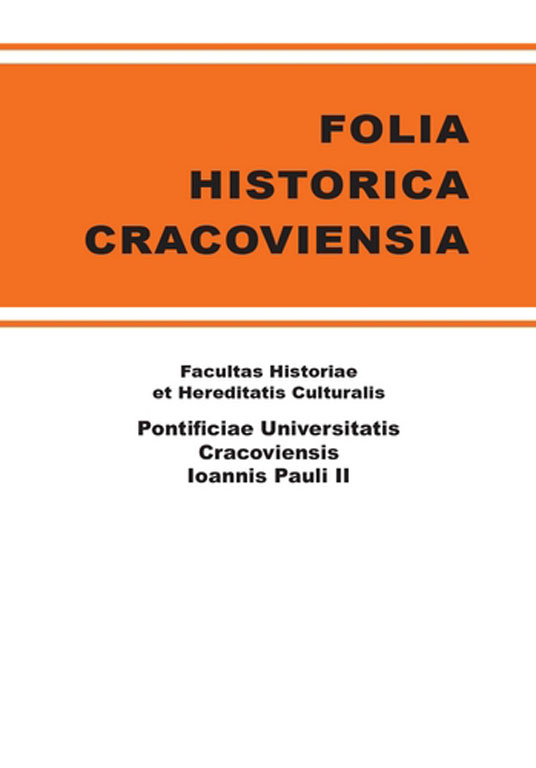Kryzys i reforma życia zakonnego XIV–XVI wieku i jego wpływ na dominikański klasztor łęczycki
Crisis and reform of religious life between 14th and 16th centuries and its impact on the Dominican monastery in Łęczyca
Author(s): Tomasz StolarczykSubject(s): History of Church(es), 13th to 14th Centuries, 15th Century, 16th Century
Published by: Wydawnictwo Naukowe Uniwersytetu Papieskiego Jana Pawła II w Krakowie
Keywords: reform of religious life; 14th - XVI century; Dominican monastery in Łęczyca
Summary/Abstract: Although to a lesser degree, the 14th century crisis of religious life also embraced Mendicant Orders, including the Order of Preachers. Dominican brothers were obliged to respect the principles written down in the rule of St Augustine as well as in the constitution of the order which regulated the life of the Order as well as defined the Order’s organizational structure. Friars however, sometimes gave in to temptation and broke the rules of their communities. The convents’ style of life with characteristic disregard for the notion of religious community in the order and omnipresent individualism in every field was in conflict with the spirit and content of the rules and constitution of the Dominican, and was referred to as conventualism. The call to initiate a thorough reform of the law in the Order was given by Master General Raymond of Capua. At his command in every Dominican province within one year one monastery with at least 12 brothers was required to introduce the rule of regular observance – the renewal of relations from the period of the formation of the Order and strict adherence (observare) to the Order’s rules. The basic condition of the observance was enclosure. Observant Convents were excluded from the authority of the Provincial and subjected to the power of vicars designated by the Master General. This led to the creation of separate congregations sometimes uniting reformed monasteries from different provinces and countries.In the Polish province the observant reform officially began on 30 July 1432 in the Wroclaw monastery of St. Adalbert. The success of the reform was confirmed by Chelmno Chapter in 1519 only in the orders in Glogow, Legnica, Krosno (part of Silesia province) as well as in part of Mazovia province, whereas the entire division of the province of Greater Poland together with the Łęczyca monastery was subjected to special care of Andrew from Parczew. The same chapter tells Vicar General of the province to re-visit the convents and reintroduce the reform. The negative effects of the collapse of observance by Łęczyca Friars Preachers were serious and they appeared immediately. The convent had never exceeded the number of 12 monks present at one time till the end of its existence in 1799.There were several reasons for the fall of observance in Poland: the reform was superficial in its character, both conventualists and observants were under the authority of the provinces, small convents were poverty stricken. According to J. Kłoczowski the initiators of the reform wrongfully restricted the reform to moral issues only, ignoring the structural aspect. It led to many monks behave passively towards the attempts to introduce observance.
Journal: Folia Historica Cracoviensia
- Issue Year: 18/2012
- Issue No: 1
- Page Range: 165-177
- Page Count: 13
- Language: English, Polish

